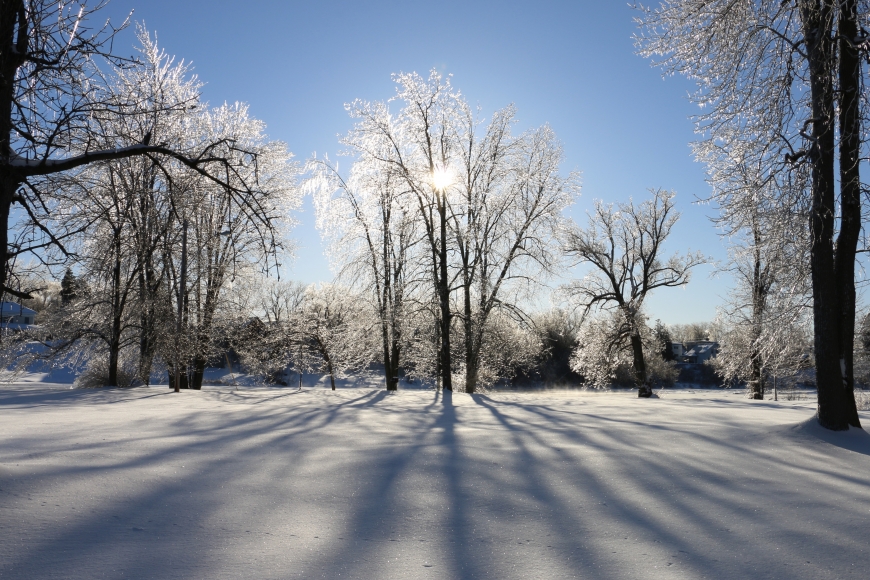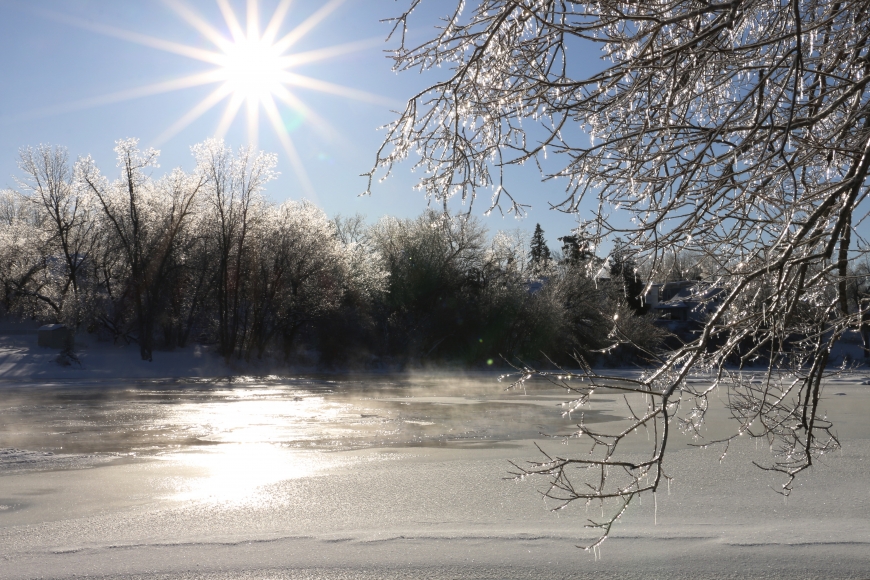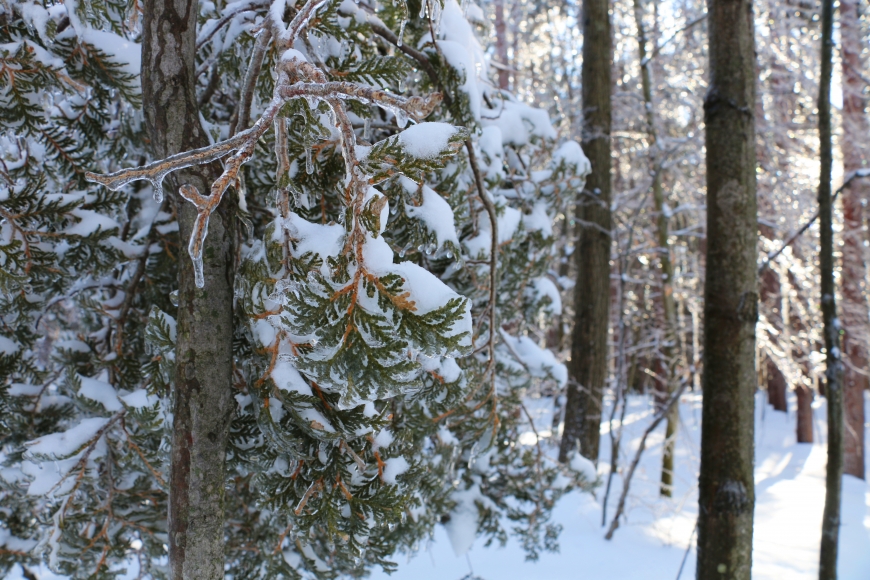


Glistening trees in Canton. Photo: Justin Dalaba
Icy trees and an icy Grasse River. Photo: Justin Dalaba
Cedars encased in ice. Photo: Jacob Malcomb



Ice Trees
The willows are weeping, but then so is every other flavor of tree in northern New York right now. The storm that hit the northeast on President’s Day brought significant ice to New York state’s northern tier, ice which has persisted for nearly a week now. If your birches are bent, spruces sagging or crabapples crooked, don’t let the ice get you down as well. As long as we don’t get a heavy snow on top of the ice load, many of these trees will straighten up over the spring and summer. Even if a tree remains stooped come July, judicious pruning can help straighten things out.
Ice storms, or glaze events, are actually quite common, on the order of a half-dozen per season, I’m told. Most are mild and cause slight or no damage, passing with little notice. But as everyone who lived through the devastation of 1998 knows, that is not always the case. The effects of the ’98 event, unprecedented both in severity and scope, is still impacting tree health even after all this time, and will continue to affect timber quality for at least another generation.
Fortunately, the ice laid down during the February 15 storm stopped a hair short of catastrophe. Some trees and limbs came down, causing sporadic power outages, but for the most part Mother Nature spared us significant harm, instead giving us a treat. Each tree has become a crystal lattice-work that scintillates in the sun—it’s an other-worldly effect that would look fake to me if I saw it on a screen. I have nearly run off the road gawking at the spectacle. Even the moon, which is nearing full, has infused the glass-coated tree branches with an ethereal light this past week.
If you think the ice has dwindled some, you would be right. Even though temperatures have remained well below freezing since the storm, the glaze is thinning bit by bit. This is called sublimation—the process of changing from a solid directly to a gas without passing through a liquid phase. Water is one of the few substances able to cheat physics in such a way.
Perhaps the most important thing to do for your trees right now is to leave them alone—do not try to knock ice from their limbs, as it could cause even more damage. Once the ice is off, all affected trees will straighten to a degree, some completely. This process will continue through the growing season. Check for broken limbs after the ice melts, and remove these with a clean cut near the trunk just outside the branch collar (i.e., don’t make flush cuts). Some good fact sheets on proper pruning can be found at http://www.treesaregood.com/treecare/resources/pruning_maturetrees.pdf and https://www.bartlett.com/resources/Pruning-Standards-to-Maintain-Landscape-Trees.pdf
Everyone has heard that March is the ideal time to prune trees, but it seems to be a secret that mid-July is the next-best pruning time. Bent trees can be pruned at this time to lighten the load near the top. No more than one-third of the branches should be taken, though, and all tip cuts must be made back to an appropriate size branch. Do an Internet search for “crown reduction pruning.” Better yet, hire a Certified Arborist or other tree care professional.
White-barked birch, primarily gray birch, in the landscape as well as in the wild, have not fared so well. I’d like to reassure owners of such trees that all will be well, but that might not happen. It’s good to keep in mind that these are a short-lived species, old at 30 and ancient at 40, and if they’ve been around a while they may have been closing in on the end of their lifespan anyway. Birch will sprout at the base, effectively replacing themselves, if you don’t mind waiting.
When it warms up, maples will “weep” in a different way if they needed corrective pruning. Research indicates this does not affect them measurably. The use of wound dressing has been found to have no benefit, and will actually hasten decay in many cases, so please don’t paint your pruning cuts.
The ice will soon melt, so don’t weep over your bent trees, but get out and take some pictures of Nature’s artwork while it lasts. For more information on tree care, contact your local Cornell Cooperative Extension office.

